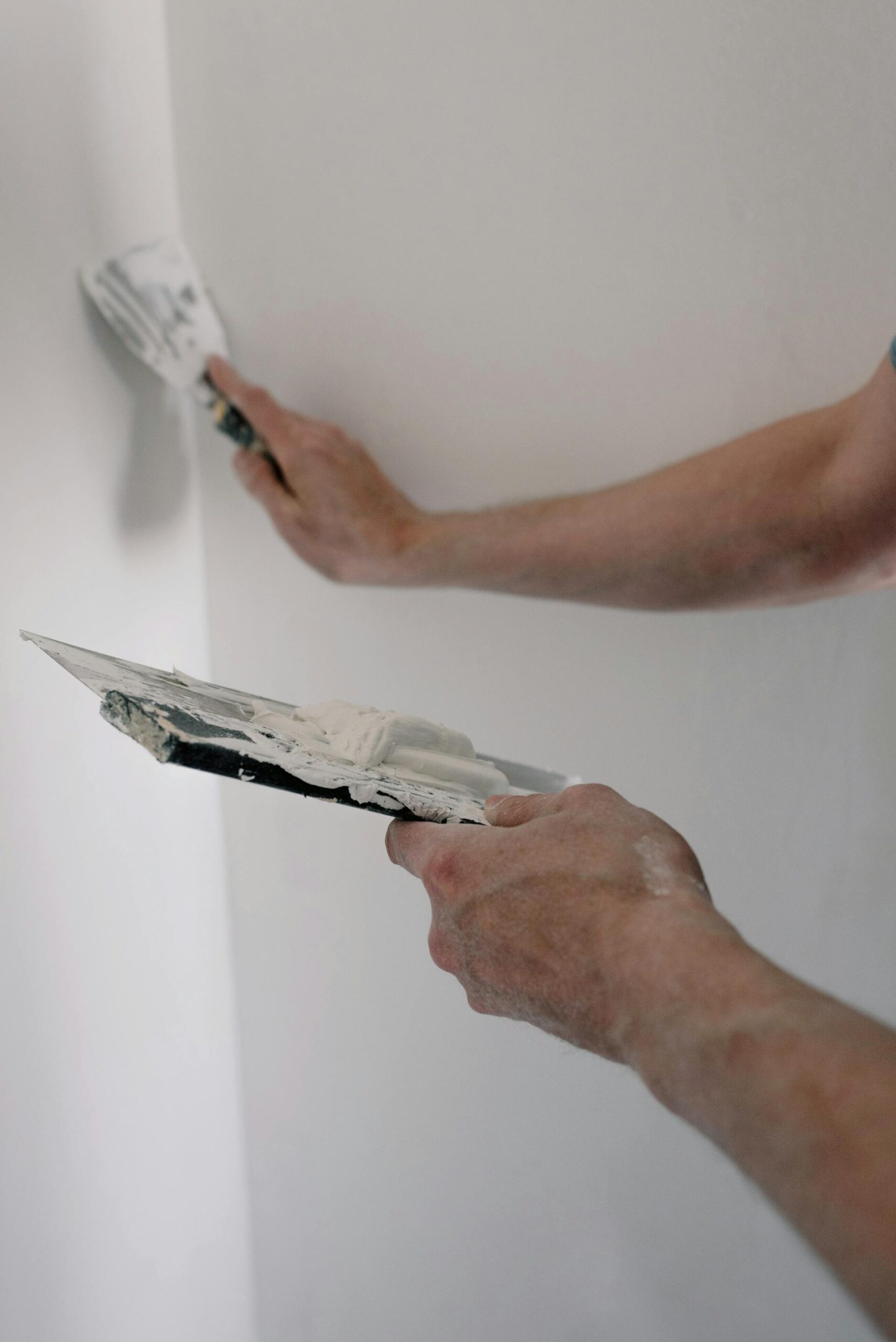Introduction
Holes and dings in your walls can draw attention for all the wrong reasons and make any space look unfinished. Perhaps you’ve got a dent from shifting furniture, a small hole left behind after taking down a shelf, or even a sizable chunk missing thanks to an accidental impact. Though each mark might have a story, those stories don’t have to live on your living room walls.
You don’t need to hire a professional to get those walls looking new again. The truth is, with the right tools, some patience, and solid drywall patch repair techniques, anyone can restore their walls to a flawless finish. If you’re anxious about how to patch drywall, this comprehensive guide will walk you through everything—from selecting the right drywall patch kit to texturing and finishing like a pro. By the end, you’ll not only know how to patch a hole in drywall, but you’ll also have the confidence to tackle any wall repair challenge you face.
1. Understanding Drywall and Common Damage
What is Drywall?
Drywall, often referred to as sheetrock or wallboard, is standard in modern homes thanks to its affordability and ease of installation. Most drywall consists of a gypsum core sandwiched between thick paper layers. The most common thickness is ½ inch, though other types exist for special situations.
Types of Drywall
- Standard drywall: Used for general walls and ceilings.
- Moisture-resistant drywall (green/purple board): Great for bathrooms, basements, and laundry rooms.
- Fire-resistant drywall: Used in garages or areas where fire safety is required by code.
- Sound-dampening drywall: Multiple interior layers reduce the transmission of noise.
- Lightweight drywall: Easier for DIYers to handle, ideal for ceilings.
TIP: Before starting your repair, check what kind of drywall you have. Using the right repair materials ensures your patch blends seamlessly.
Common Drywall Damage
Life happens, and walls take the hits:
- Small holes: Left by nails, tacks, screws, or wall anchors.
- Medium holes: Often caused by door handles, furniture bumps, or minor accidents.
- Large holes: Result from plumbing repairs, electrical work, or major impacts.
- Cracks: Caused by settling or humidity changes.
- Dents and dings: Everyday occurrences from kids, pets, and heavy use.
Knowing the kind of damage you’re dealing with is the first step to choosing the best repair method.
2. The Ultimate Drywall Patch Kit: What You Really Need
For nearly all drywall patch repair techniques, assembling the right tools and materials ahead of time saves frustration.
Must-Have Tools:
- Utility knife
- Drywall saw or jab saw (for larger holes)
- Putty knife (2, 4, and 6-inch widths)
- Sandpaper or sanding block (medium and fine grits)
- Drill or screwdriver (for large repairs)
- Level or straightedge
- Tape measure
- Dust mask and safety goggles
Materials:
- Joint compound (pre-mixed is easiest)
- Drywall tape (paper or mesh)
- Drywall screws (if patching large holes)
- Matching thickness drywall scraps
- Primer and matching paint
- Clean sponge or cloth
Bonus: Ready-made drywall patch kits work well for small to medium repairs. They typically include a mesh patch, compound, and a putty knife—handy for quick jobs.
3. Step-by-Step: How to Patch Drywall—From Tiny Holes to Large Gaps
A. Small Holes (Nails, Screws, Pins)
These are the easiest repairs and don’t usually require a patch kit.
- Clean the Area: Use your utility knife to trim around frayed paper or loose debris.
- Apply Spackle or Joint Compound:
- Use the putty knife to press filler into the hole.
- Scrape off excess so it’s level.
- Let Dry, Then Sand: Wait for the compound to dry, then sand flush with the wall.
- Prime and Paint: Always prime before painting so the repaired spot blends with the original finish.
B. Medium Holes (1–6 Inches)
This is where a drywall patch kit comes in handy.
- Prep the Opening: Square off the hole with a utility knife or drywall saw.
- Apply a Mesh Patch: Place the mesh patch over the hole, with at least an inch of overlap on all sides.
- Add Joint Compound:
- Apply a generous layer with your putty knife.
- Feather the edges several inches beyond the patch.
- Let the first coat dry, then apply a second, thinner coat for better blending.
- Sand Smooth: Use a sanding sponge and extend the sanding area beyond the patch for an invisible repair.
- Prime and Paint: Use matching paint for a seamless finish.
C. Large Holes (Over 6 Inches)
For bigger jobs, you’ll use a replacement piece of drywall.
- Square and Clean the Damaged Area:
- Cut a neat square or rectangle around the hole.
- Clear away debris and loose paper.
- Install Support Braces:
- Insert a wooden support (like a 1×2 board) inside the wall and screw it to each side of the hole for extra stability.
- Cut a Drywall Patch:
- Use a scrap of drywall matching the original thickness.
- Trace and cut to shape; the fit should be snug.
- Attach Patch:
- Screw the patch onto the braces and wall studs.
- Tape and Mud the Seams:
- Place paper or mesh tape over seams.
- Apply at least two coats of joint compound, feathering out generously for a gradual blend.
- Sand, Prime, and Paint: Sand lightly between coats—and after the final coat—prime, and paint to match the wall.
4. Advanced Drywall Patch Repair Techniques: Texture, Edges, and Seamless Blending
Texture Matching Techniques
Matching the original wall texture is critical to making your patch work invisible.
- Smooth Walls: Feather compound as wide as possible. Sand edges until there’s no ridge or bump.
- Orange Peel: Use an aerosol wall texture—spray lightly from 18″ away. Practice on scrap first!
- Knockdown:
- Spray or dab joint compound onto the patch.
- After a few minutes, “knock down” the peaks with a drywall knife.
- Popcorn: Use a popcorn ceiling texture spray kit for ceiling patches. This is messy—cover everything!
Pro Tip: For any texture, let each layer dry fully before painting. Start light and build up in thin coats.
5. Professional-Looking Results: Sanding, Priming, and Painting
Proper Sanding
- Use fine-grit sandpaper (220 or higher).
- Blend the patch edge outward—at least six inches—to avoid visible bumps.
- Feel with your hand: the area should feel perfectly smooth and flat.
Priming
Never skip priming. Bare joint compound absorbs paint differently than the rest of your wall, so primer evens things out for a uniform look.
Painting
- Use a small roller for a texture match whenever possible.
- Feather your paint strokes well beyond the patch—blend at least 12 inches out.
- Two thin coats are better than one thick coat.
- If the patch is noticeable after painting, re-sand, and repaint.
6. Ongoing Maintenance and Preventing Future Drywall Damage
Smart Prevention Tips
- Use doorstops to prevent knob holes and dents.
- Choose sturdy wall anchors for shelving or heavy decor—no more torn drywall!
- In high-traffic areas (kids’ rooms, hallways), install furniture bumpers.
- Check for signs of moisture or leaks, especially near windows and pipes.
Quick Fix Kit
Keep a small drywall patch kit with spackle, a putty knife, mesh patches, and sandpaper handy. Tackle small repairs immediately to prevent them from getting worse.
Regular Inspections
Inspect your drywall once a year. Look for:
- Soft or spongy spots
- Staining or bubbling paint (possible moisture behind the wall)
- Long cracks that could indicate settling or structure movement
7. Troubleshooting Common DIY Drywall Patch Problems
- Patch won’t stick? Remove dust and debris and try again. Some surfaces need a quick swipe with a damp sponge or even a coat of primer first.
- Visible bulges or ridges? Sand more aggressively and feather the joint compound further. Flatness is crucial.
- Texture doesn’t match? Use less compound or sand more; add another spray layer for orange peel or knockdown.
- Paint doesn’t blend? Use primer, match the original paint type (matte, satin, etc.), and extend your feathering.
Frequently Asked Questions
Q: What’s the best way to patch small nail or screw holes in drywall?
A: Clean out loose debris, fill with spackle or lightweight compound, smooth with a putty knife, let dry, sand lightly, prime, and paint.
Q: How do I use a drywall patch kit for a medium hole?
A: Clean the hole, apply the adhesive mesh patch from your kit, cover with joint compound, feather the edges, sand, prime, and then paint.
Q: Can I repair large holes in drywall by myself?
A: Yes! Square the hole, add plywood supports, attach a new drywall patch, tape and mud seams, then sand, prime, and paint.
Q: How do I hide a drywall patch so it’s truly invisible?
A: Feather out the joint compound at least six inches past the patch, sand until perfectly smooth, prime, and use matching paint with light, blended coats.
Q: What type of paint should I use after a drywall repair?
A: Use the original paint finish if possible (matte, satin, semi-gloss). Always prime before painting over new patches for best color consistency.
Conclusion
Walls matter. They aren’t just the backdrop to your life—they’re a reflection of your attention to detail and pride in your home. With the right drywall patch repair techniques, you can transform unsightly holes or damage into smooth, flawless walls without calling in a pro. Choose the right drywall patch kit for the job, follow the steps outlined above, and don’t be afraid to take your time with finishing touches.
So, the next time you spot a hole or ding, you won’t panic. You’ll know how to patch drywall and get perfect, professional-looking results. Keep this guide handy, share it with friends, or save it to Pinterest so your future self can thank you, too!

